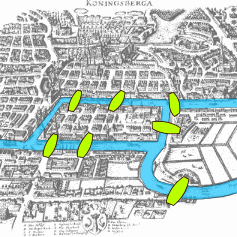Recipes
A recipe is a collection of configuration that sets a Quine instance up for a specific purpose. A recipe is defined in a yaml file and contains configuration for: ingest streams, standing queries, UI configuration, and some metadata about the recipe. They are also a great way to learn about Quine features like ingest streams that build the streaming graph, standing queries that find results you are looking for and take actions, and customizing the exploration UI.
In order to launch Quine with a recipe, use -r, followed by either the short name of a sample recipe or a local YAML filename. Some recipes can expect input parameters. The parameter values are passed by using command line arguments with -x or --recipe-value.
For example, to run the wikipedia recipe1.
java -jar quine-1.10.0.jar -r wikipedia
Quine Recipes¶
-
APT Detection¶
Endpoint logs and network traffic data merge to auto-detect exfiltration and alert for an IoB that matches a typical malicious data exfiltration pattern.
 Shared by: Ryan Wright
Shared by: Ryan Wright
-
CDN Cache Efficiency¶
Continuous and real-time computation of CDN cache node efficiency from Fastly CDN logs, materialized by ASN, Geo, Asset and PoP.
 Shared by: Allan Konar
Shared by: Allan Konar -
Password Spraying¶
Detect password spraying attacks in real time. Ingests JSON-formatted IAM-style password authentication log file, creates graph, uses standing queries to sent alerts.
 Shared by: Allan Konar
Shared by: Allan Konar -
Temporal Locality¶
Relate email messages sent or received by a specific user within a 4-6 minute window.
 Shared by: Michael Aglietti
Shared by: Michael Aglietti -
Monitor an MMO¶
Build a live event-driven model of what's currently happening in the "PlanetSide 2" MMOFPS video game. A great example of ingesting from Websockets.
 Shared by: Ethan Bell
Shared by: Ethan Bell -
IMDB Movie Data¶
Explore a familiar graph data set using Quine to combine data from separate files, unwind nested data into unique nodes, populate node parameters, then generate a new stream from the combined data.
 Shared by: Michael Aglietti
Shared by: Michael Aglietti -
Wikipedia Page Creation Feed¶
Wikipedia page creation events are instantiated in the graph with relationships to a refied time model Additionally, page creation event comments are echoed to standard output.
 Shared by: Landon Kuhn
Shared by: Landon Kuhn -
Entity Resolution¶
Learn how real-time entity resolution – the deduplication of similar data – can drastically help with creating a comprehensive view of your data.
 Shared by: Ryan Wright
Shared by: Ryan Wright -
Webhook Data Enrichment¶
Learn how to enrich the Quine graph from an external service using the Standing Query HTTP webhook output.
 Shared by: Matthew Pagan
Shared by: Matthew Pagan -
Ethereum Tag Propagation¶
Ingestion a live stream of events from the Ethereum Blockchain and demonstrate real-time "dirty money" tag propagation.
 Shared by: Ethan Bell
Shared by: Ethan Bell -
Basic File Ingest¶
Ingest each line from a file passed as
$in_fileinto a disconnected graph then fill each node with a property containing the line. Shared by: Landon Kuhn
Shared by: Landon Kuhn -
Conway's Game of Life¶
Conway's Game of Life cellular automaton demonstrating Quine's Turing completeness through recursive standing queries.
 Shared by: Matthew Cullum
Shared by: Matthew Cullum -
Harry Potter¶
Small graph of connected nodes that explore the familial relationships of Harry Potter characters.
 Shared by: Alec Theriault
Shared by: Alec Theriault -
Apache Log Analytics¶
Example use of Quine's unique Standing Query function to parse incoming text for each line of an Apache web server access log into a graph.
 Shared by: Josh Cody
Shared by: Josh Cody -
Certstream Firehose¶
Reproduces the behavior of the certstream website by connecting to the certstream firehose via SSL-encrypted websocket and printing to standard out each time a new certificate is detected.
 Shared by: Ethan Bell
Shared by: Ethan Bell -
Quine Logs Recipe¶
Ingest Quine log lines into Quine!
 Shared by: Michael Aglietti
Shared by: Michael Aglietti -
Approximating Pi¶
Incrementally approximates pi using Leibniz' formula in Quine.
 Shared by: Ethan Bell
Shared by: Ethan Bell
-
When a recipe is launched that does not contain a file extension, Quine will fetch and launch the recipe by name from the recipes repository on GitHub. For example,
java -jar quine-1.10.0.jar -r wikipediawill download thewikipedia.yamlfile from from GitHub and launch that version of the recipe, even if you have a copy ofwikipedia.yamlyour local directory. This method only works for example recipes that are distributed with Quine. ↩